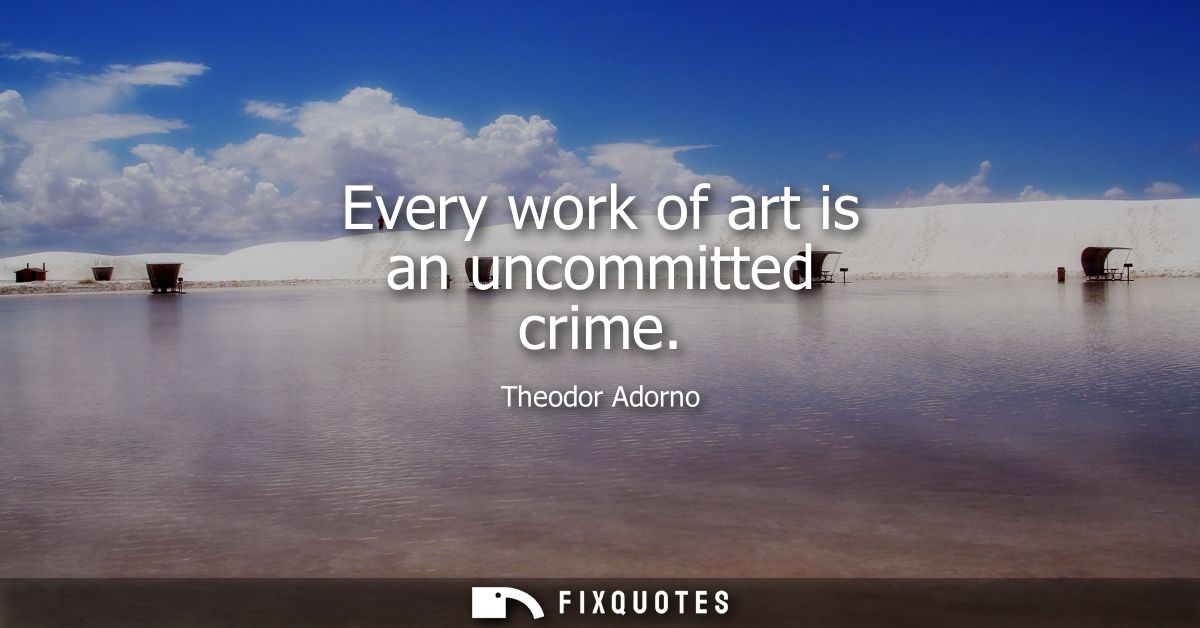"Every work of art is an uncommitted crime"
About this Quote
Theodor Adorno’s assertion that "Every work of art is an uncommitted crime" distills his critical view on the disruptive potential at the heart of aesthetic creation. Art, in this light, is an act of subtle subversion, unsettling the norms and conventions of its time without crossing into direct, punishable offense. Each artwork embodies an implicit rebellion, challenging society by making visible what is repressed, unspeakable, or marginalized. Yet, unlike crime, which openly transgresses laws and faces consequences, art operates inside the protected, ambiguous zones of imagination and expression. Its “crime” is thus uncommitted; it hovers at the threshold of insurrection, hinting at an alternative reality but never manifesting as violence or actual illegality.
Through this concept, Adorno underscores art’s power to reveal contradictions within society, to unsettle, expose, and critique realities that are otherwise normalized or unchallenged. A painting, a poem, a piece of music can give form to desires, fears, and critiques that the social order represses or forbids. Their transgressive aspect lies in their capacity to articulate what goes unsaid, to refuse the logic of conformity without marching in direct opposition or inciting literal revolt. The artwork, then, is both accomplice and witness: it acknowledges the possibility of crime, of radical transformation or destruction, yet channels that impulse into creation rather than violation.
Moreover, Adorno’s formulation points to the dialectical tension within art: the impulse to destroy, social sensibilities, aesthetic conventions, moral codes, is always tempered by the creative act itself. Art participates in negating the existing order, but always through mediated, symbolic forms. It preserves a space for imagining another world, another set of relations, without collapsing into criminality or nihilism. In its refusal to commit the crime it contemplates, art enacts a critique that is at once dangerous and tantalizingly incomplete, leaving viewers unsettled, provoked, and perhaps awakened to new possibilities.
More details
About the Author

